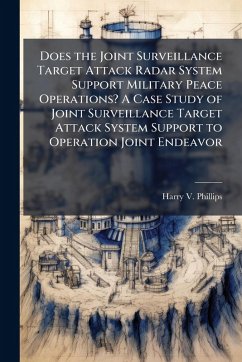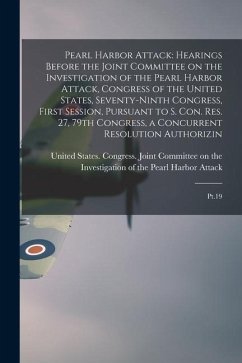
Joint Operations Case Study, Weserubung Nord

PAYBACK Punkte
8 °P sammeln!
In the history of modern warfare, WeserÃ1/4bung Nord, the German invasion of Norway in 1940, occupies a distinguished station as the first campaign "jointly" planned and executed by ground, sea, and air forces. This paper examines the origins, concept, and planning of WeserÃ1/4bung Nord, as well as the execution of the landings. Brief attention is given to the defense of the landings against Allied counterstrokes and to issues associated with unified planning and direction. The origins of the campaign are found in the German naval experience in the First World War, interwar naval strategy de...
In the history of modern warfare, WeserÃ1/4bung Nord, the German invasion of Norway in 1940, occupies a distinguished station as the first campaign "jointly" planned and executed by ground, sea, and air forces. This paper examines the origins, concept, and planning of WeserÃ1/4bung Nord, as well as the execution of the landings. Brief attention is given to the defense of the landings against Allied counterstrokes and to issues associated with unified planning and direction. The origins of the campaign are found in the German naval experience in the First World War, interwar naval strategy debates, and the persona of Grand Admiral Erich Raeder, who was determined to secure a decisive role for the German Navy in the Second World War. Raeder capitalized on the fortuitous opportunities the Russo-Finnish War and the Norwegian traitor Vidkun Quisling presented to win Hitler over to his naval plans. Raeder and the Navy heavily influenced the concept development and planning of the campaign in concert with the High Command of the (German) Armed Forces, which also had a vested organizational interest in a military solution of the Norwegian issue. In executing WeserÃ1/4bung Nord, the German Armed Forces encountered major problems only at Oslo and Narvik. However, the operational-level success of the campaign tends to draw attention away from fundamental problems regarding unified planning and direction which emerged during the preparation and execution of the campaign. This work has been selected by scholars as being culturally important, and is part of the knowledge base of civilization as we know it. This work was reproduced from the original artifact, and remains as true to the original work as possible. Therefore, you will see the original copyright references, library stamps (as most of these works have been housed in our most important libraries around the world), and other notations in the work. This work is in the public domain in the United States of America, and possibly other nations. Within the United States, you may freely copy and distribute this work, as no entity (individual or corporate) has a copyright on the body of the work. As a reproduction of a historical artifact, this work may contain missing or blurred pages, poor pictures, errant marks, etc. Scholars believe, and we concur, that this work is important enough to be preserved, reproduced, and made generally available to the public. We appreciate your support of the preservation process, and thank you for being an important part of keeping this knowledge alive and relevant.












